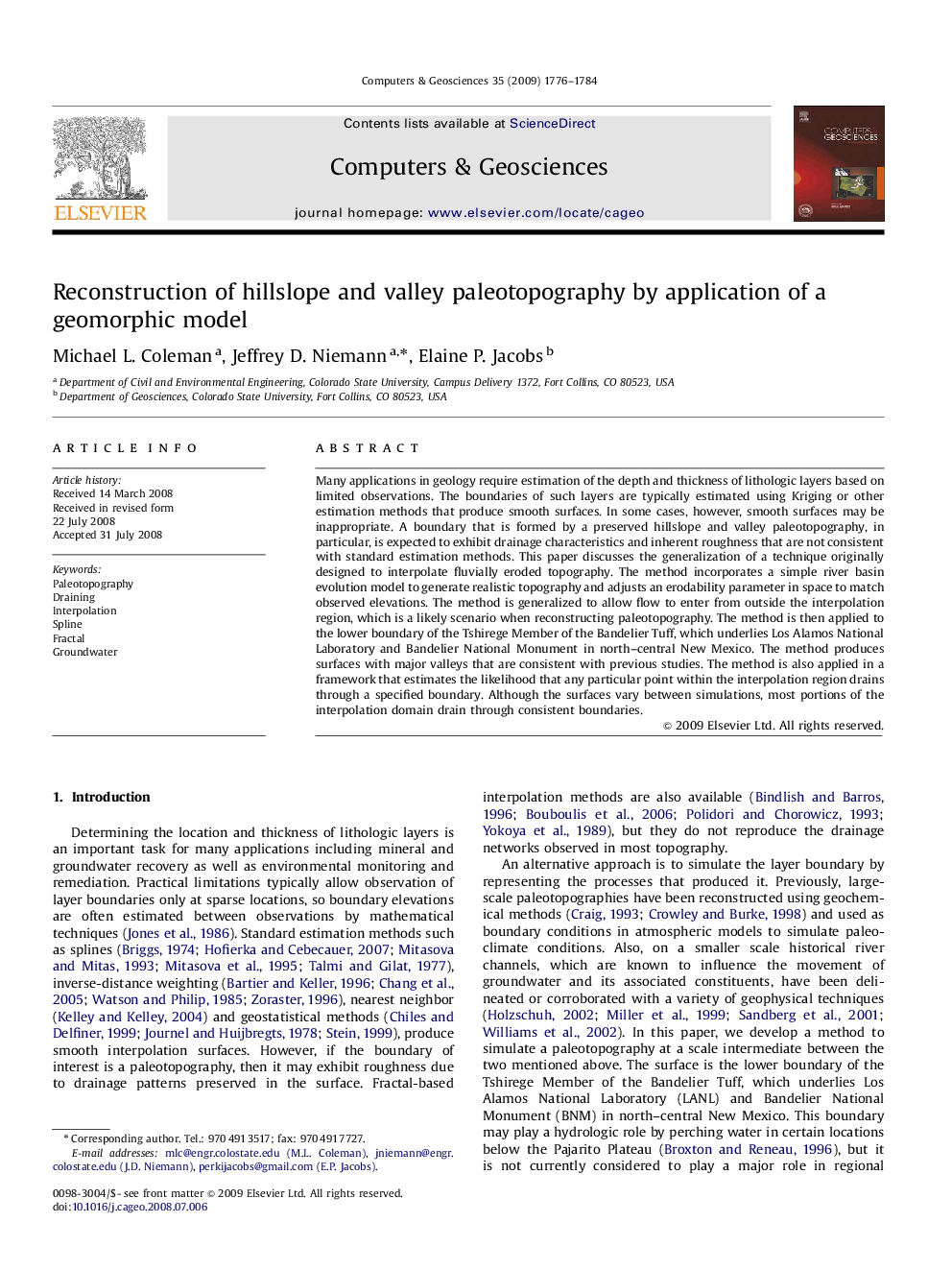| Article ID | Journal | Published Year | Pages | File Type |
|---|---|---|---|---|
| 508404 | Computers & Geosciences | 2009 | 9 Pages |
Many applications in geology require estimation of the depth and thickness of lithologic layers based on limited observations. The boundaries of such layers are typically estimated using Kriging or other estimation methods that produce smooth surfaces. In some cases, however, smooth surfaces may be inappropriate. A boundary that is formed by a preserved hillslope and valley paleotopography, in particular, is expected to exhibit drainage characteristics and inherent roughness that are not consistent with standard estimation methods. This paper discusses the generalization of a technique originally designed to interpolate fluvially eroded topography. The method incorporates a simple river basin evolution model to generate realistic topography and adjusts an erodability parameter in space to match observed elevations. The method is generalized to allow flow to enter from outside the interpolation region, which is a likely scenario when reconstructing paleotopography. The method is then applied to the lower boundary of the Tshirege Member of the Bandelier Tuff, which underlies Los Alamos National Laboratory and Bandelier National Monument in north–central New Mexico. The method produces surfaces with major valleys that are consistent with previous studies. The method is also applied in a framework that estimates the likelihood that any particular point within the interpolation region drains through a specified boundary. Although the surfaces vary between simulations, most portions of the interpolation domain drain through consistent boundaries.
